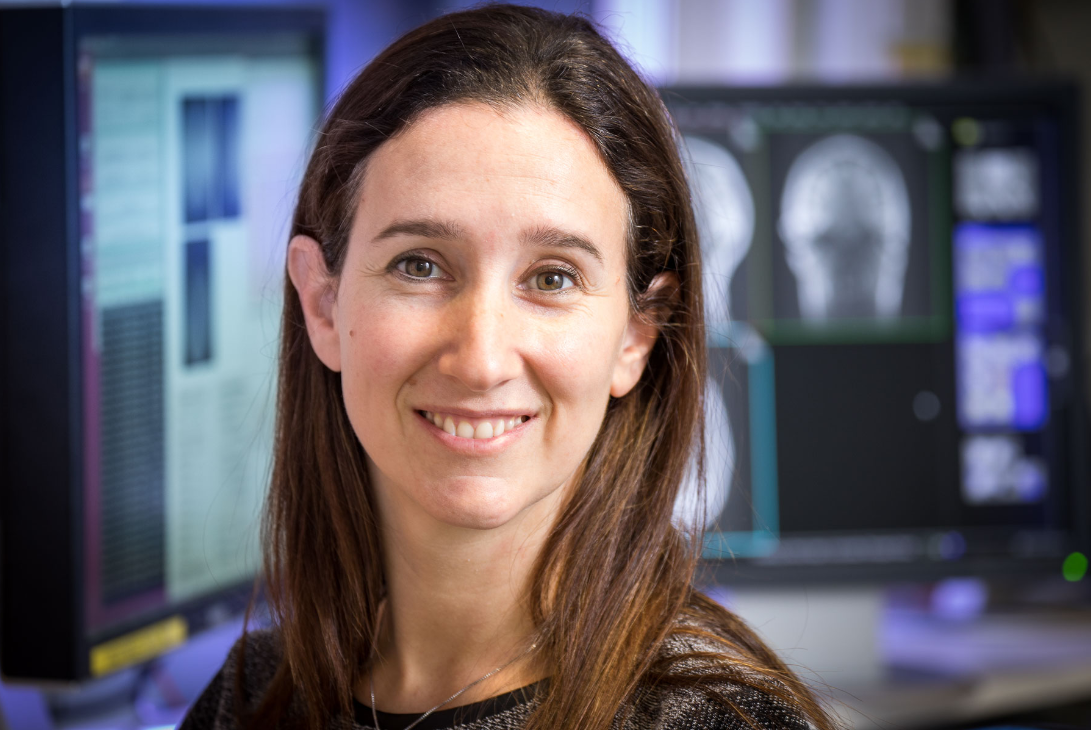BMA Foundation for Medical Research – grant winners 2023
Find out about the winners of the 2022 grant round and their projects by clicking through the tabs below.
-
Dawkins & Strutt grant to assist research into eye health

 Dr David Wong
Dr David WongCambridge University Hospitals
Multi-omics to explain disease severity in inherited optic neuropathies
Autosomal dominant optic atrophy (DOA) and Leber hereditary optic neuropathy (LHON) are the commonest forms of inherited optic neuropathies. They cause irreversible blindness in children and young adults, which results in high socioeconomic burden and psychological distress. Intriguingly, some LHON carriers and patients with DOA experience rapidly progressive visual loss, whereas others do not. We do not fully understand the factors underlying this phenotypic variability.
We aim to discover new therapeutic targets for DOA and LHON by exploring the factors underlying this phenotypic variability. We will perform whole genome and RNA sequencing on blood samples obtained from patients with a confirmed molecular diagnosis of LHON and DOA. Unaffected individuals will be recruited, as well as those with mild, moderate and severe visual loss. Genome sequencing will reveal associations between genetic variants and disease severity, whilst RNA sequencing will show sets of genes that are differentially expressed between patient subgroups. These results will inform experiments using existing in vitro disease models to understand the biological pathways affected.
This will be of major relevance to clinicians in terms of prognostication and stratification for future clinical trials. Furthermore, it will inform future efforts to design new gene therapies to treat these devastating blinding conditions.
-
Doris Hillier grant to assist research into rheumatism and arthiritis



Dr Joshua Bennett
Newcastle UniversityIs tofacitinib treatment associated with improved muscle health in rheumatoid arthritis?
In addition to causing joint inflammation, rheumatoid arthritis can lead to skeletal muscle becoming smaller and weaker, referred to as rheumatoid sarcopenia (RS). Affected patients have a greater risk of falls, fractures, and loss of independence. There are no licensed drug treatments for RS.
An approved drug treatment for rheumatoid arthritis called tofacitinib may help to restore muscle health, based on observed changes in patients’ blood tests such as creatinine, creatine kinase and C-reactive protein. The Rheumatoid Arthritis and Muscle (RAMUS) Study aims to answer this question by monitoring 15 participants with rheumatoid arthritis from before they start tofacitinib through to 1 month and 6 months afterwards. Any changes in muscle mass will be identified by magnetic resonance imaging (MRI) and muscle strength is assessed in the hand and lower limbs.
Importantly, participants in the RAMUS Study undergo muscle biopsy at baseline and 6 months after starting tofacitinib. The Doris Hillier grant will allow me to analyse these precious tissue samples, to look for clues that will tell us more about RS and to explain any microscopic or molecular changes that occur after exposure to tofacitinib.
-
H C Roscoe grant to assist research into the elimination of the common cold and/or other viral diseases of the human respiratory system




Dr Thushan De Silva
Sheffield Univerity
The impact of respiratory viruses on the mucosal cellular ecosystem
How the cellular architecture of the upper respiratory tract (URT) is affected by different respiratory viruses is not clear, including any dysregulated remodelling or inflammatory memory, which could have detrimental or beneficial effects on the risk of further viral infections.
This work will characterise upper respiratory tract gene expression profiles and cellular composition following SARS-CoV-2, influenza and rhinovirus infections, including pre-infection states and remodelling during the recovery phase. This work will be nested within a longitudinal household cohort study of respiratory virus transmission in The Gambia, leveraging existing samples and respiratory viral multiplex data, as well as involvement in an international network generating a global atlas of URT tissues. We will apply novel machine learning frameworks to bulk and single cell RNAseq data generated from nasopharyngeal samples to define the URT ecosystem.
The influence of several factors such as age, type of respiratory virus and persistent virus positivity on the distribution of these cellular transcriptional states that define the URT multicellular communities will be established. These data could help identify novel therapeutic targets to either enhance recovery of mucosal cellular architecture or reduce the risk of respiratory virus infections.
-
Josephine Landsell grant to assist research into heart disease




Professor Theresa McDonagh and
Dr Clare Bannister
King's College Hospital
Novel biomarkers for anthracycline induced sub-clinical cardiotoxicity
Anthracyclines are a highly effective and commonly prescribed class of chemotherapy used to treat many types of cancer. A risk of using anthracycline chemotherapy is the development of heart disease called cardiotoxicity. Cardiotoxicity is characterised by an early sub-clinical phase of injury to the heart which may lead on to the development of a decline in heart muscle function or even heart failure.
The early identification of patients with sub-clinical cardiotoxicity is important, as it identifies those patients at greatest risk of developing significant heart complications in the future. At present accurate biomarkers to detect this early phase of injury are lacking and there is a pressing need for alternatives.
This study aims to investigate novel blood and imaging biomarkers in patients receiving anthracycline chemotherapy and will assess their ability to detect sub-clinical cardiotoxicity. The overall aim is to identify accurate biomarkers that detect the early phase of injury to the heart.
For patients, this has the potential to not only improve and personalise risk-stratification, but also to guide more appropriate cardiac surveillance and the earlier optimisation of cardiovascular therapy to reduce the risk of future cardiac complications.
-
J Moulton grant to assist research into Long-Covid



Dr Sean Knight
Manchester UniversityResolution of inflammation in Long-COVID
Up to 70% of patients hospitalised for COVID-19 pneumonitis have persistent symptoms several months after the acute infection. Often, no discernible organ damage is found, and patients are diagnosed with Long-COVID. Given the scale of immune dysregulation in acute COVID-19, resolution is not likely to be orderly and it is expected that parts of the immune system will stay activated for some time.
We have previously defined the key innate and adaptive immune signatures associated with acute COVID-19 and have now collected blood samples from our patients as they recover. This funding will be used to compare the rate of recovery of COVID-19 immune signatures in patients who have made a full recovery to those developing Long COVID. Identifying the key pathways associated with Long-COVID will provide insight to drive further mechanistic work, as well as identify potential therapeutic targets.
-
J Moulton grant to assist research into stroke


Dr Maryna Basalay MD, PhD
University College London
Protecting the brain from ischaemic stroke: the importance of inflammation
Occlusion of a cerebral artery with a blood clot causes irreversible cellular damage in the setting of acute ischaemic stroke. This damage can launch an inflammatory form of a programmed cell death called pyroptosis, which is defined as the formation of membrane pores by the protein gasdermin D (GSDMD). Experiments in rats with transient knockdown or overexpression of GSDMD suggest that pyroptosis contributes substantially to final brain infarct volume following middle cerebral artery occlusion.
Common co-morbidities such as diabetes and atherosclerosis increase the expression of proteins involved in pyroptosis, highlighting its particular potential significance in these patients, who are known to have worse outcomes of an acute stroke. Thus, GSDMD itself may be a promising target for neuroprotection in patients with acute ischaemic stroke, especially in the setting of diabetes and atherosclerosis.
As silencing GSDMD in rats was previously shown to be beneficial in animals without comorbidities, it is important to assess the role of GSDMD in brain injury using models of diabetes and atherosclerosis. In addition, we further propose to evaluate two structurally distinct inhibitors of GSDMD, namely LDC7559 and disulfiram, in a mouse model of stroke.
-
The James Trust grant for research into asthma



Dr Hans Michael Haitchi, MD, MMed(INT), PhD, PD, MRCP(London), FHEA, PGcert
& Dr Alexandra Kermack, MBBS, PhD, MRCOG
Southampton UniversityEffect of maternal asthma and increased weight on childhood risk of asthma
Asthma is the most common chronic respiratory disease in children and is estimated to affect 1 in 11 children in the UK. Asthma runs in families suggesting a genetic predisposition that interacts with environment triggers leading to its initiation. 60% of women in the UK are overweight (body mass index (BMI)>25) and in our Maternal Environment in Pregnancy (MEP) study 74% of mothers with asthma are overweight.
The pro-inflammatory environment in women with allergic asthma and those with increased BMI during pregnancy is a risk factor for children to develop asthma in later life. How maternal asthma and being overweight contribute to the development of asthma in children is not fully understood.
This study will test how the mothers’ asthma and being overweight during pregnancy changes asthma related mediators of inflammation and immune response in the fluid that surrounds the baby in the womb (amniotic fluid), blood and placenta, collected during elective caesarean birth.
Several possible asthma mediators will be analysed together with clinical data from mums and babies using multiple novel research techniques. This may help us to explain why boys and/or girls born to asthmatic mothers who are overweight have an increased risk of developing asthma.
-
Kathleen Harper to assist research into COVID-19 vaccine hesitancy



Dr Sudaxshina Murdan, PhD, B.Pharm
& Dr Sara Garfield,
UCL School of PharmacyDevelopment of Interfaith interventions to address hesitancy towards COVID-19 vaccination
The COVID-19 pandemic has very clearly demonstrated how vaccine hesitancy, which is personal to an individual, ends up having considerable impacts on the individual’s family, friends, customers, workplaces, communities, and ultimately, on countries and the world. Religious beliefs constitute one factor affecting for vaccine hesitancy. Belonging to certain ethnic groups is also a predictor of hesitancy. The complex intersection of race and religion means that a closer look at these factors is needed in the fight against vaccine hesitancy.
Much has been written in the scientific literature about how to address vaccine hesitancy. A recurring theme is engagement and dialogue with communities and faith leaders. However, most faith-based interventions have been investigated in individual faiths, in isolation from other faiths, even when several faiths were included in the same project.
We propose an interfaith intervention to address vaccine hesitancy. This will enable the creation of shared spaces, shared learning and collaboration among people of different faiths. The aim of the research project is to inform the development of interfaith interventions to address hesitancy towards COVID-19 vaccination.
-
Margaret Temple grant to assist research into schizophrenia

Dr Benjamin Perry, PhD, MRCPsych, MBBS, MSc, BSc
University of Cambridge
The Psychosis Metabolic Risk Calculator (PsyMetRiC)
People with psychotic disorders like schizophrenia die on average 15 years sooner than the general population, mostly as a result of physical health problems like heart disease and diabetes – which are up to twice as common in people with psychotic disorders than in the general population. In fact, early signs of developing physical health problems are often detectable from the onset of psychosis in young adults.
Since primary prevention is the best means to reduce excess suffering, disability and deaths from these physical health problems, there is clear and crucial need for better tools to help clinicians who look after young people with psychotic disorders care for the physical health of their patients.
Recently, the Psychosis Metabolic Risk Calculator (PsyMetRiC) was developed to predict which young people with psychosis will be most likely to develop physical health problems in the future. However, PsyMetRiC now needs testing and refining in a much larger sample.
This project will utilize anonymised data from up to 56 million UK residents from two large databases to refine, update and test PsyMetRiC. This work will maximise the accuracy, acceptability and clinical usefulness of PsyMetRiC, propelling it toward future routine use in clinical practice.
-
Scholarship Grant to assist research into the mental health of medical students

Miss Elena Sheldon, BSc
& Professor Christopher Burton, MD FRCGP
University of SheffieldMedical student mental health: a mixed-methods and process mapping study
Mental health problems are highly prevalent among UK medical students. Providing access to support services that deliver appropriate timely treatment is an urgent priority for universities and healthcare providers. However, medical students face particular sets of barriers to seeking and accessing support and many at-risk do not receive professional help. Challenges in service provision and navigating pathways between services mean that medical students often fall between the gaps, reflecting a failure to meet their psychological health needs.
A cross-sectional online survey comprising the CCAPS-34, demographics and service use questions will characterise the mental health profiles of medical students studying at the University of Sheffield along with help-seeking behaviours. Semi-structured qualitative interviews with a nested sample of medical students will garner a rich understanding of help-seeking experiences, intentions, preferences and barriers. Qualitative interviews with professional stakeholders will identify challenges to inter-agency service provision.
Co-design workshops will bring students and professionals together to deliver a process map to establish current service pathways, i.e. what support is available to medical students, and identify gaps in service access and delivery. Findings will be translated to a toolkit to promote how services can better meet the mental health needs of medical students.
-
Vera Down grant to assist research into neurological disorders


Dr Roberto Bellanti, MBBS, MRCP
University of OxfordDevelopment of peripheral nerve specific biomarker assays
Guillain-Barré syndrome (GBS) and chronic inflammatory demyelinating polyradiculoneuropathy (CIDP) are conditions where the immune system, the body’s natural defence against illness and infections, mistakenly attacks and damages the nerves, causing progressive paralysis. In severe cases, people can lose their ability to walk, swallow and breathe. About 1 in 20 people with GBS die, and many are left with long-term disability.
Treatments for these diseases are only partially effective. Part of the problem is that we do not have biomarkers (naturally occurring molecules) to diagnose and assess response to treatment, as the amounts released by the damaged nerves are tiny and extremely difficult to measure.
Recently, very powerful machines called “single molecule analysers” (SiMoA) have enabled us to measure biomarkers at 100-2000 times lower concentrations than before (equivalent to being able to detect a teaspoon of sugar dissolved in a full-sized Olympic swimming pool).
In my project, I will study two potential biomarkers of nerve damage, peripherin and periaxin, and develop SiMoA assays to measure them in the blood. I will grow human peripheral nerve cells in a dish in the laboratory using stem cells, which have a special ability to turn into different cell types, including those of the nerves. I will then artificially damage these cells and measure peripherin and periaxin released after damage. Finally, I will measure the biomarkers in the blood of people with inflammatory neuropathies.
This work will positively impact on both clinical and research aspects of the inflammatory neuropathies. Clinically, peripheral nerve specific biomarkers will assist with diagnosis, prognostication, monitoring of disease activity and titration of treatment. On a research level, peripherin and periaxin could be used as surrogate intermediate outcome measures, improving the efficiency of clinical trials and accelerating advances in care.
-
Wesleyan grant to assist research into the impact of the pandemic on the mental health and wellbeing of practising UK healthcare professionals, and potential impact on future healthcare


Dr Christopher Mullington, MBBS, FRCA, BSc(Hons), PhD
& Dr Helen Jones
Imperial College LondonThe impact of airborne PPE on physical and mental wellbeing
Airborne Personal Protective Equipment (PPE) is designed to prevent disease transmission in high-risk scenarios. During the COVID-19 pandemic its use increased, and this trend is predicted to continue. Although airborne PPE is effective, it limits heat loss and thus places wearers at risk of heat illness. Heat illness is a disease spectrum which includes heat exhaustion and heat stroke. Symptoms start when core temperature exceeds 38°C and it becomes life-threatening when core temperature approaches 40°C. It negatively impacts the majority of body systems, but the central nervous system is particularly affected. ITU nurses are at high-risk of suffering these adverse effects because they are frequently asked to wear airborne PPE throughout 12-hour shifts.
This physiological study will examine the heat illness associated with wearing airborne PPE during ITU nursing shifts. The heat stress will be quantified with wearables, including a pill which records core temperature. Heat stress biomarkers, such as neurone-specific-enolase, will be collected to assess neuronal injury and the impact on muscle contraction and cognitive function will be measured. Qualitative methodology will be used to examine the long-term impact on physical and mental health. We predict the results will highlight the need for interventions that limit the adverse effects of airborne PPE use.
-
BMA Foundation for Medical Research
For more information, please get in touch:
Corporate development, British Medical Association, Tavistock Square, London, WC1H 9JP
Tel: 0207 383 6341
Email the team: researchgrants@bma.org.uk



